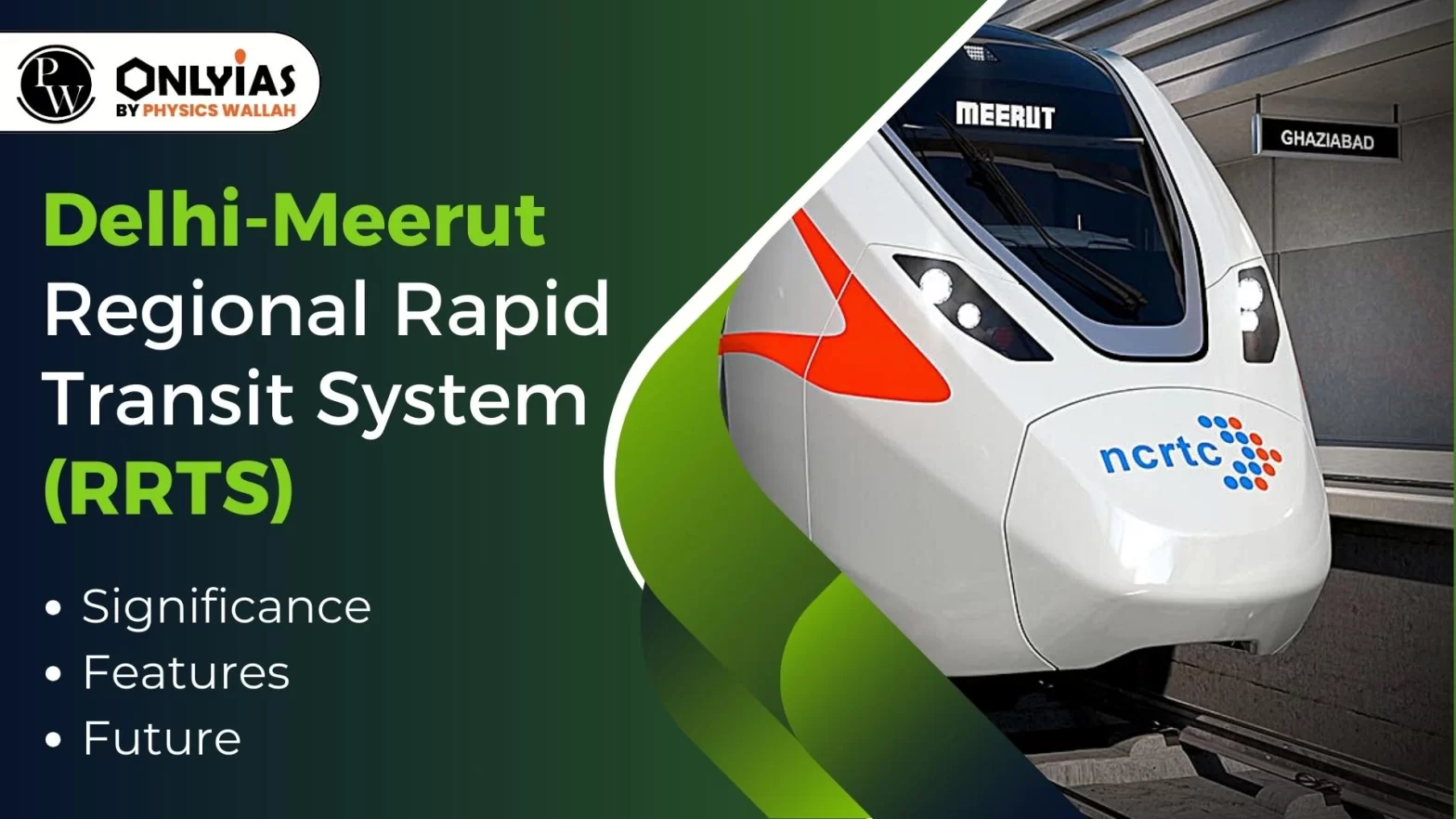Context: The Prime Minister of India inaugurated the first phase of the Delhi-Meerut Regional Rapid Transit System (RRTS).


The RRTS provides high-speed trains for intercity commuting, thereby reducing burden on road infrastructure and also reducing pollution. It also paves way for modernisation of the transport system in the country.
| Must Read | |
| NCERT Notes For UPSC | UPSC Daily Current Affairs |
| UPSC Blogs | UPSC Daily Editorials |
| Daily Current Affairs Quiz | Daily Main Answer Writing |
| UPSC Mains Previous Year Papers | UPSC Test Series 2024 |
The first phase of the Delhi-Meerut Regional Rapid Transit System was inaugurated on 20th October.
It is a new rail-based, semi-high-speed, high-frequency commuter transit system, which is designed to provide high-speed trains for intercity commuting.
A total of eight corridors have been identified, out of which the Delhi – Ghaziabad – Meerut Corridor; Delhi – Gurugram – SNB – Alwar Corridor; and Delhi – Panipat Corridor will be prioritized in the first phase.
The trains have been manufactured with a designed speed potential of 180 kmph and an operational speed potential of 160 kmph.
The trains used for Regional Rapid Transit System (RRTS) will be named as Namo Bharat. The National Capital Region Transport Corporation (NCRTC) had previously named them RapidX.
Government of India has borrowed about $1 billion from Asian Development Bank (ADB), $500 million from New Development Bank (NDB) and $500 million from Asian Infrastructure Investment Bank (AIIB). Apart from that, the Government of India will fund 20%, Government of Delhi 3.22%, and Government of Uttar Pradesh 16.78%.

<div class="new-fform">
</div>